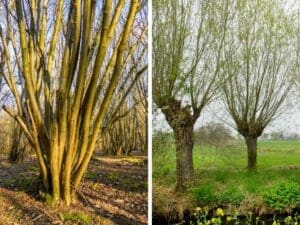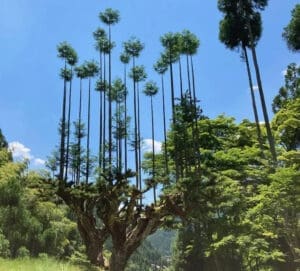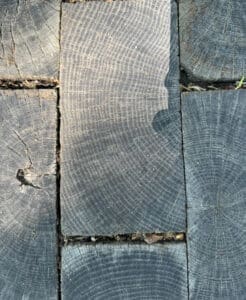Sweet Chestnut is a great Coppice Tree
The featured species of the month is Sweet Chestnut or European Chestnut. Similar of course to the blighted American Chestnut, but the Sweet variety flourishes in the UK and Europe and is often lauded for exterior cladding and for all manner of bushcraft work. The Chestnut is also a prime species for Coppice Forestry and I have a discussion about that silvicultural practice too. In fact I talk about the differences between Coppicing, Pollarding, and the Japanese slightly similar Daisugi technique.
I also take a field trip to Pittsburgh to look at the last drive-able wooden paved street. I talk about the Nicholson Paver and wonder about its application to modern landscape architecture. Certainly our technology has improved to create a better wooden cobble and perhaps not a street for driving but for pedestrian malls or even park paths.

Coppice & Pollard

Daisugi

Nicholson Paver
Featured Species: Sweet Chestnut
Castanea sativa or Sweet Chestnut, or European Chestnut is a highly popular species in Europe but espeically in the UK. It is widely used for exterior cladding and its ring porous nature makes it great for riving. Many buschcraft projects are made from it because of that property.
It is of course similar to its unfortunate American Chestnut cousin but a bit denser and darker in color. The hardness is half that of most Oaks and the grain a bit less "grainy" for an overall more mellow working experience.
I find Chestnut not just to be a pleasure to work with but a nice alternative to the Oaks when you want that typical mid brown, wood grain species.




My yard is fenced & birds have created chokecherry along it. I trim it & in 2-3 years it gets 20′ long pole & 2-3″ diameter at the base. I’ve been able to get some 4″ dia milled & glued into a stool top.
I have a catalpa that I’m going to cut down & then coppice next year.